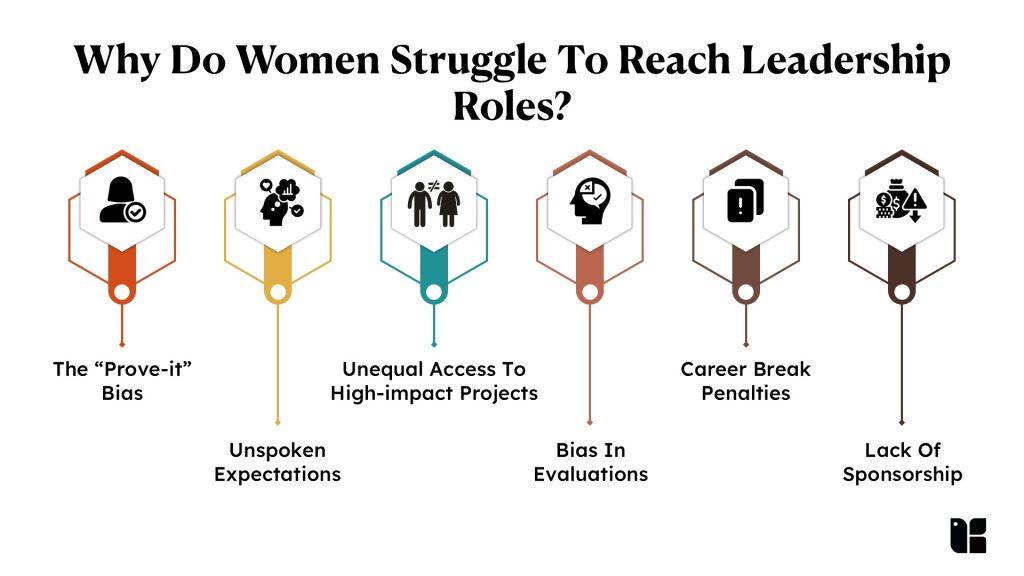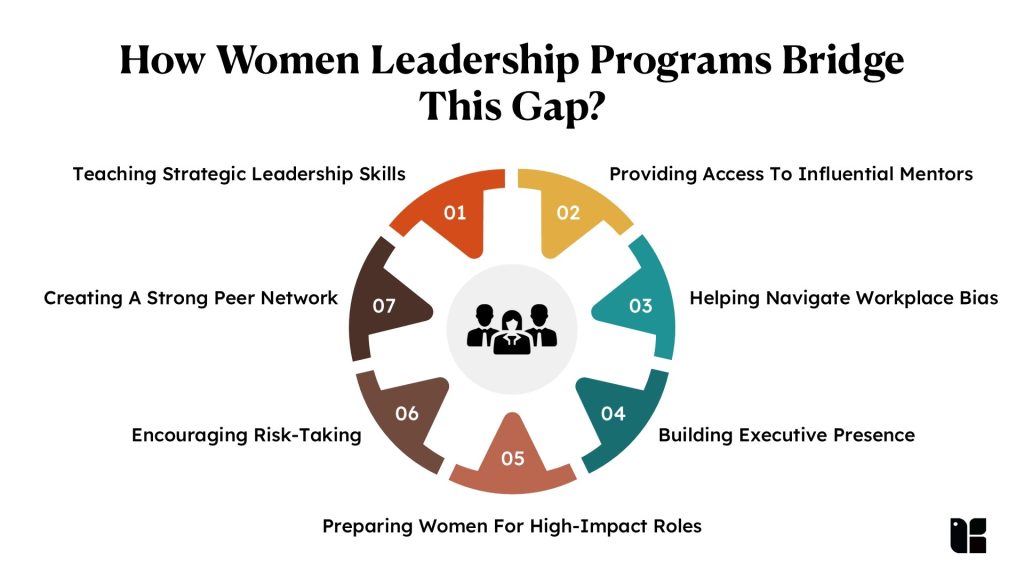If hard work alone got women into leadership, the corporate world would look very different. But despite being equally qualified, women still struggle to reach top positions. Why? Because for women, climbing the leadership ladder is also about knowing how to navigate biases, build influence, and claim opportunities before they slip away to their male counterparts.
This is where women leadership programs come in. They don’t just teach management skills; they give women the strategies, confidence, and network needed to break past the invisible barriers holding them back. Let’s understand why the gap exists and how leadership programs are changing the game.
Why Do Women Struggle To Reach Leadership Roles?
It’s not a lack of ambition or talent that keeps women from leadership, it’s the system they have to navigate. Here’s what stands in the way:

- The “Prove-It” bias – Women often have to work harder than men to prove they’re leadership material. While men are promoted based on potential, women are promoted based on past performance, making the climb slower.
- Unspoken expectations – Women are often expected to be “likeable” and accommodating, which can make assertiveness seem risky. A direct and confident man is seen as a leader, while a woman with the same traits might be labeled as difficult.
- Unequal access to high-impact projects – Leadership readiness is often measured by experience in strategic or high-visibility projects. However, women are more frequently assigned operational or support roles rather than roles that position them for leadership.
- Bias in evaluations – Women tend to receive more vague or personality-focused feedback (e.g., “Be more assertive”) rather than actionable advice tied to business outcomes. This limits their ability to improve in ways that drive promotions.
- Career break penalties – Women who take career breaks for motherhood often face setbacks when returning to work, as companies may perceive them as less committed or out of touch with industry trends.
- Lack of sponsorship – Mentorship builds skills, but sponsorship accelerates careers. Men often have senior advocates for promotions, while women lack powerful sponsors to unlock leadership opportunities.
These challenges don’t mean women can’t reach leadership, they just mean they need a different strategy. And that’s exactly where leadership programs make a difference.
How Women Leadership Programs Bridge This Gap?
Leadership programs give women the skills, opportunities, and support they need to break through barriers and step into leadership roles. Here’s how they make a real difference:

Teaching Strategic Leadership Skills
Many women excel at execution but haven’t had opportunities to shape big-picture decisions. Leadership programs help them shift from a task-focused mindset to a strategic one. Through case studies, simulations, and direct exposure to high-level decision-making, they learn how to assess risks, allocate resources, and drive long-term business growth. This training helps them prepare for executive roles where strategic thinking is key.
Providing Access To Influential Mentors
One of the biggest challenges women face is a lack of access to senior leaders who can guide them. Leadership programs directly address this by connecting participants with mentors and sponsors, people in influential positions who advocate for their career growth. Through structured mentoring sessions, women receive tailored advice, insights into leadership challenges, and even recommendations for promotions or key projects. These relationships often continue beyond the program, giving women a long-term career advantage.
Preparing Women For High-Impact Roles
Leadership isn’t just about managing teams, it’s about driving change and making high-stakes decisions. However, women are often given operational or support roles that don’t position them for executive leadership. Programs help by exposing participants to real-world leadership challenges, assigning them projects that mirror high-level responsibilities, and providing direct feedback on their decision-making skills. This hands-on approach ensures that women are ready to take on leadership roles with confidence.
Helping Navigate Workplace Bias
Bias in the workplace isn’t always obvious, but it affects how women are perceived and promoted. Leadership programs teach women how to recognise and address these biases head-on. They learn how to advocate for themselves in salary negotiations, position their achievements effectively, and push back against unfair expectations without damaging relationships. By mastering these strategies, women become more equipped to advance without being held back by outdated stereotypes.
Building Executive Presence
Confidence and authority are essential for leadership, but many women struggle with being heard in high-pressure environments. Leadership programs focus on developing executive presence, how to speak with conviction, carry themselves with confidence, and engage in assertive communication. Through public speaking workshops, role-playing exercises, and personal coaching, participants refine their leadership style so they can command attention in boardrooms and high-stakes meetings.
Creating A Strong Peer Network
Leadership programs bring together ambitious women from different industries, creating a powerful network of support. These connections go beyond just networking, they turn into long-term relationships where women share opportunities, provide career advice, and open doors for each other. Many leadership programs also include alumni networks, giving participants continued access to influential professionals even after completing the program.
Encouraging Risk-Taking
Many women hesitate to take professional risks due to societal expectations or self-doubt, which can limit their career growth. Leadership programs help shift this mindset by encouraging bold decision-making and fostering an entrepreneurial approach to leadership. By working on innovative projects, engaging in high-stakes business challenges, and receiving structured feedback, participants gain the confidence to take calculated risks and embrace leadership roles that require decisive action
Simply put, Women Leadership Programs don’t just prepare women for leadership, they give them the edge to claim it.
Conclusion
More women are stepping into leadership roles than ever before, but the path is still far from even. While talent and hard work are non-negotiable, access to the right skills, mentors, and opportunities makes all the difference. Leadership programs provide exactly that, a structured way for women to accelerate their growth and claim positions that have long been out of reach. The real shift happens when more organisations recognise this and actively invest in developing their women leaders. The question isn’t whether women are ready for leadership, it’s whether workplaces are ready to support them.








